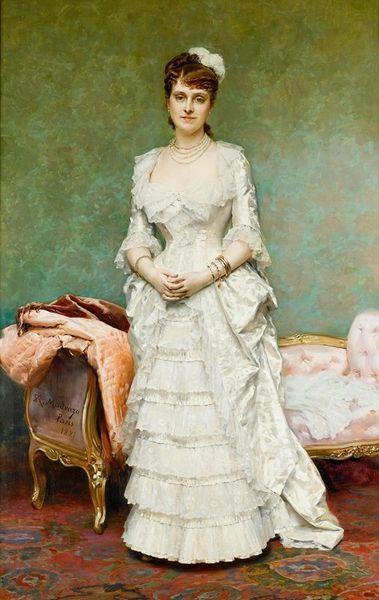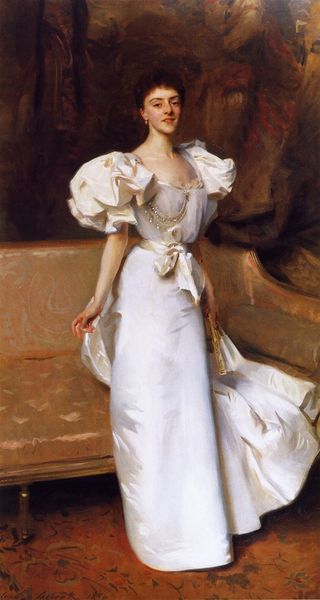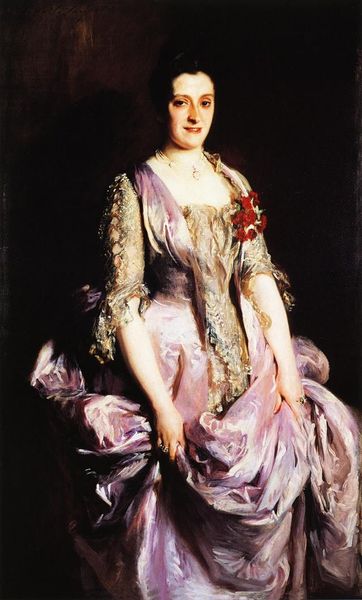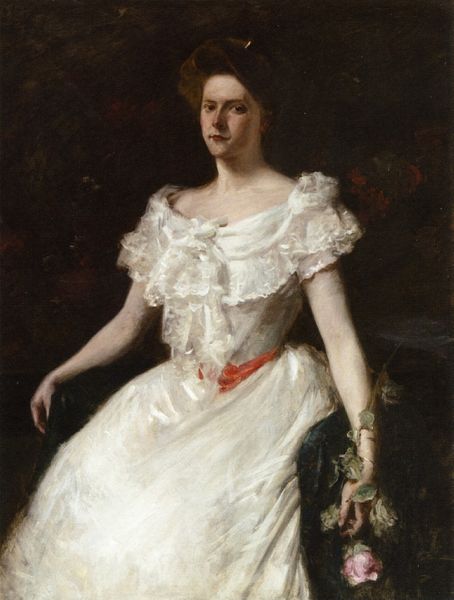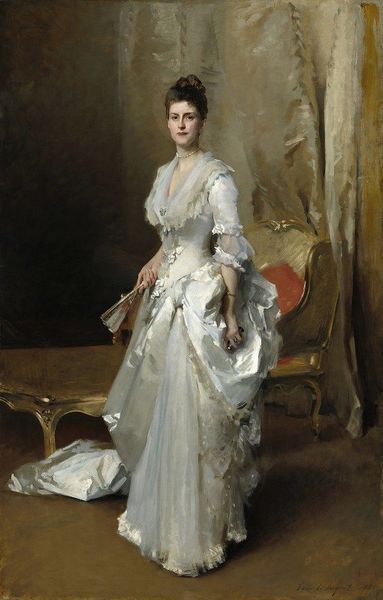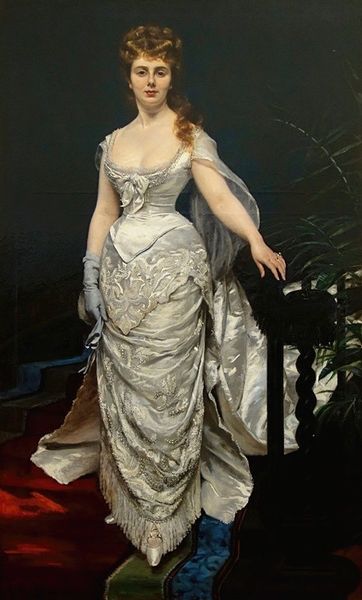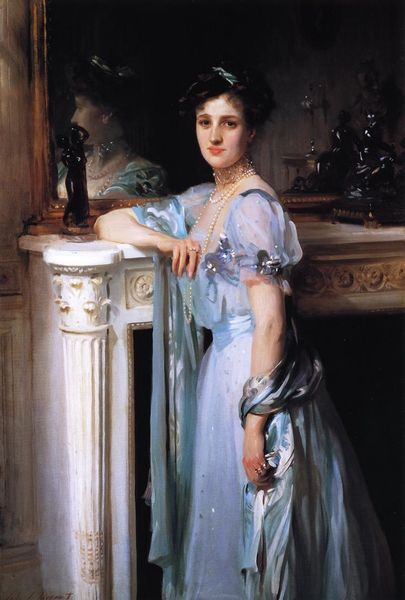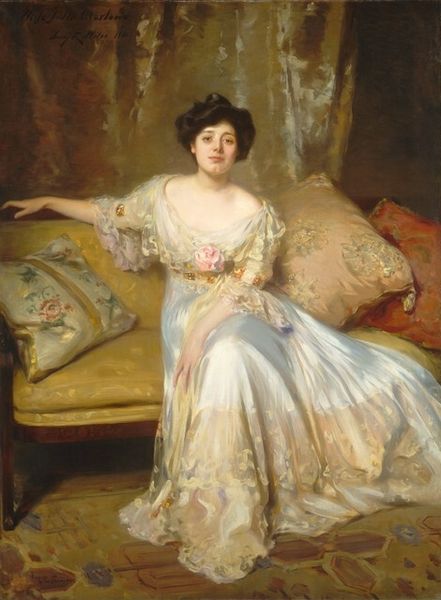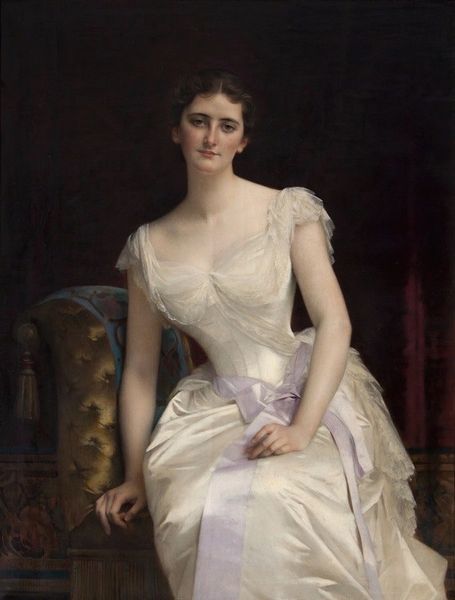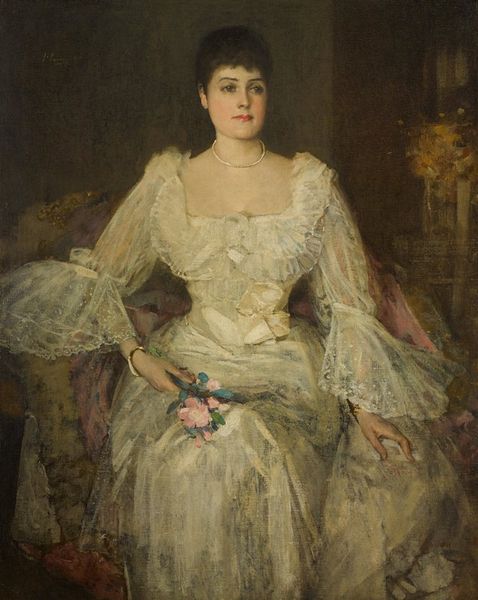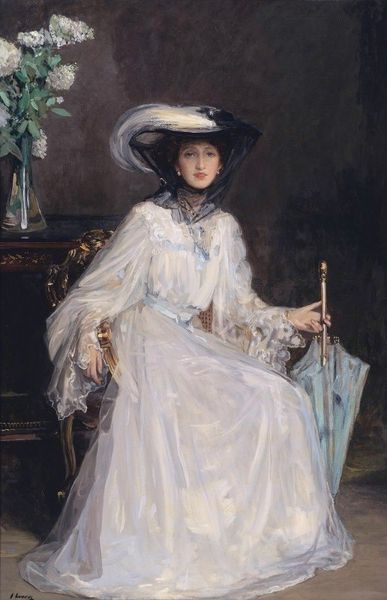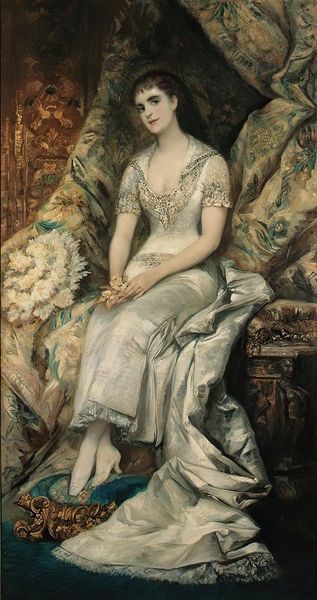
Dimensions: 215.5 x 143.5 cm
Copyright: Public domain
Editor: So, here we have John Singer Sargent's "Hylda, Daughter of Asher and Mrs. Wertheimer," painted in 1901. It's an oil painting currently at the Tate Britain. I find her expression really striking, a mixture of poise and perhaps a hint of melancholy. What can you tell me about this painting? Curator: Sargent often painted portraits of wealthy women, capturing their elegance and status, and it's important to understand the socio-economic context. How did women of this era negotiate power? Were they merely symbols of their husband’s success, or did they possess agency? Consider the dress itself: a beautiful, light pink confection. Does it empower her or confine her within societal expectations of femininity? Editor: That's a great point about the dress. I hadn’t thought about the tension there. I guess it could be both empowering and restrictive, depending on her position within society. Curator: Exactly. And consider the role of Asher Wertheimer, her father, a wealthy art dealer. Was this portrait commissioned to elevate the family's status? Sargent was highly sought after, so having him paint your daughter was a statement in itself. Does this influence how we view Hylda's gaze? Editor: It does add another layer. Knowing about her father and Sargent’s reputation makes me wonder about the dynamics at play. Was she truly seen or was she being presented? Curator: Precisely! These paintings become documents of their time, reflecting societal aspirations and often, subtle power imbalances. Editor: This has really changed how I see this portrait, beyond just admiring its aesthetic qualities. It's a snapshot of a very specific moment. Curator: Yes. It's a powerful reminder that art is always in dialogue with its social context, inviting us to question the narratives they present and uncover hidden perspectives.
Comments
No comments
Be the first to comment and join the conversation on the ultimate creative platform.
